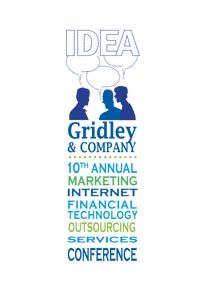 In a morning panel at the Gridley & Co. Conference in New York City moderated by Gridley’s Pratik Patel, panelists from the data-driven ecosystem paused just long enough amidst the swirl of funding announcements to provide a few nuggets on the momentum for real-time bidded inventory.
In a morning panel at the Gridley & Co. Conference in New York City moderated by Gridley’s Pratik Patel, panelists from the data-driven ecosystem paused just long enough amidst the swirl of funding announcements to provide a few nuggets on the momentum for real-time bidded inventory.
Setting the stage for the discussion, real-time ad platform AppNexus’ CTO Mike Nolet said his company’s technology saw 8 billion RTB’d impressions for sale in one day towards the end of December. He said this was a huge difference compared to January 2010.
Yahoo!’s Right Media Exchange head Ramsey McGrory reiterated that his company has been in the RTB space the past 18 months, but that real-time bidding (RTB) in its current form across the ecosystem is “lopsided” adding;
“Publishers are engaged it in a way that they don’t necessarily know what it does to the market or what trade-offs there are. There’s not enough evidence to confirm that the higher CPMs that publishers are generating are simply remarketing impressions and advertisers didn’t want to pay more for it, or whether the buyers are buying not only the media, but the data that comes with it.”
Michael Barrett, CEO of AdMeld, predictably countered given his company’s sell-side bet in the RTB space:
“For the sophisticated publishers that are doing [RTB] now and have big ad operations and sales teams, it’s definitely a quid pro quo. They know the URL is being supposed by and large, because if you’re going to go blind in RTB don’t bother. There’s enough blind inventory in the world – it’s just not going to get bought or it will get bought for 40 cents.”
Demand-side platform X+1’s CEO John Nardone was adamant about his buy-side view about the publisher segment that may benefit most:
“There are segments of publishers that are really turning RTB to their advantage. If you’re a small, niche publisher with a valuable audience, RTB is an opportunity to print money.”
Addressing some of the concerns outlined by Yahoo!’s McGrory, AppNexus’ Nolet shed light on what he says publishers get in an RTB-enabled auction -and that they won’t see elsewhere for their biddable display:
“The value that comes from RTB for the publisher is that there’s data the advertiser has that the publisher has no insight into. RTB lets advertisers buy with their data. So it’s that 10 or 20% of the (publisher’s) inventory – that’s inventory that would not have been premium, but it can now become ‘premnant’ -or whatever that new category is. You can actually get high CPMs for it…”
With RTB rapidly enabling the bidding of display impressions, it is apparent the buy-side is increasingly – and unsurprisingly – loving the transparency. Even though, some publishers may still call this cherry picking, which seems valid to a degree, they’re going to have to get their arms around this new world – if it’s just to take advantage of the “premium-remnant” or “premnant” layer.
Looking at the bigger picture, RTB isn’t just about that “premnant” segment or “slideshow” remnant or whatever segment, of course. In the future, it would seem sophisticated, real-time buying at the impression level comes to the guaranteed side. It may be a new world of fulfillment as buyers don’t get the guaranteed fill. Perhaps that’s the buy-side quid pro quo. Publishers will likely need to create new, more sophisticated contractual arrangements with buyers.
The shift to transparency is “on.” Publisher goals (increasing yield) will be a critical part of it -as will the need to include a compelling integrated/custom offering. Interestingly, media companies like Aol (a tech co., too?) have taken first steps to automation on the custom offering side as it carves out an automated path to the premium segment with acquisitions such as Pictela.
Ultimately, the need for publishers to have a valuable audience will never dissipate in digital unless there’s a privacy meltdown.
By John Ebbert











